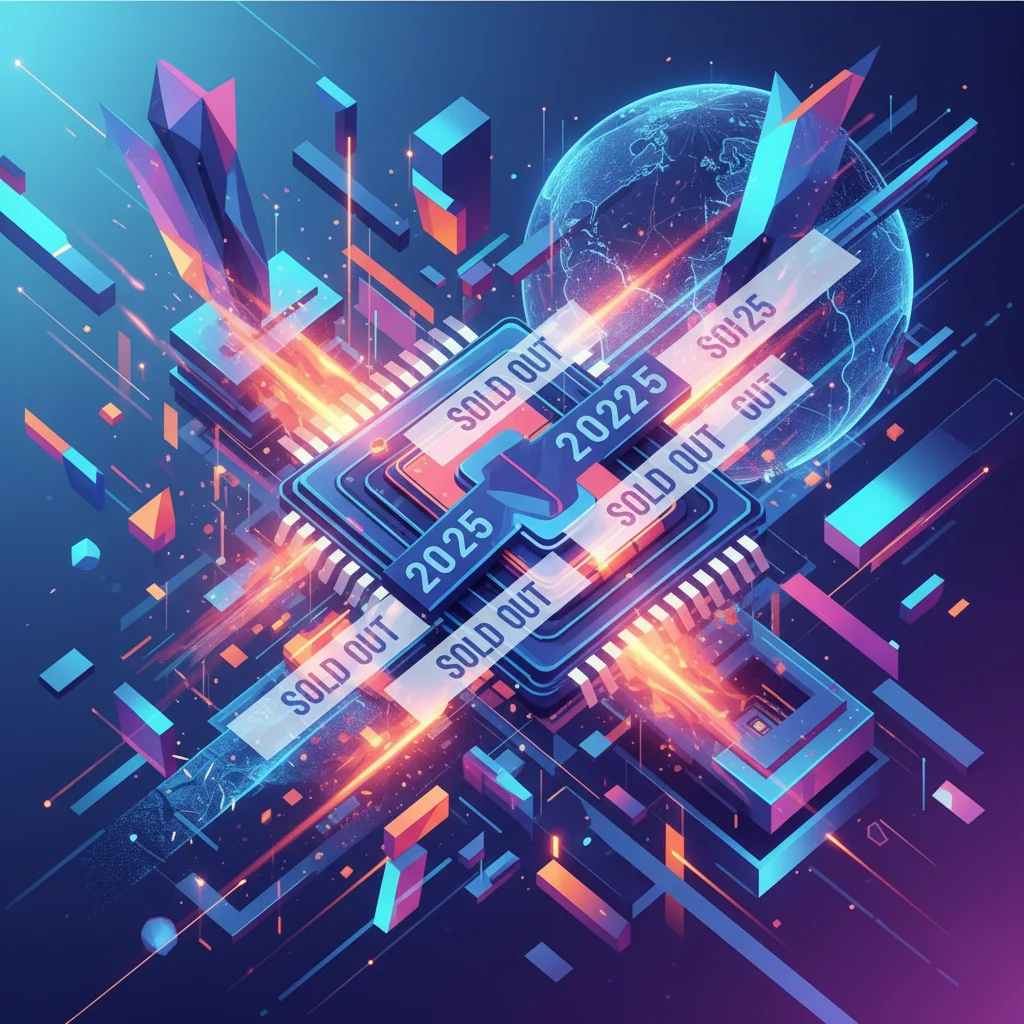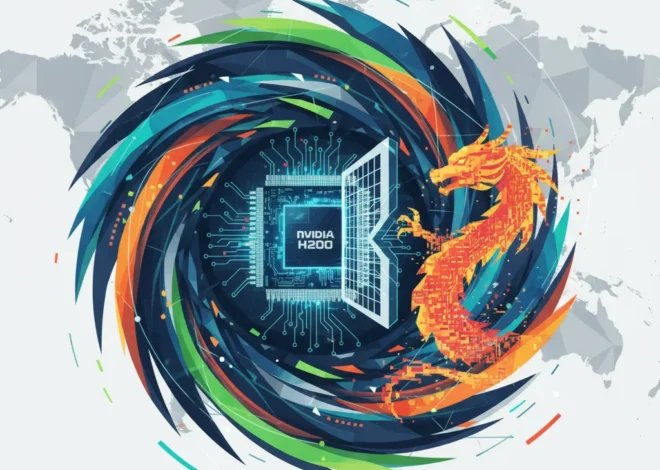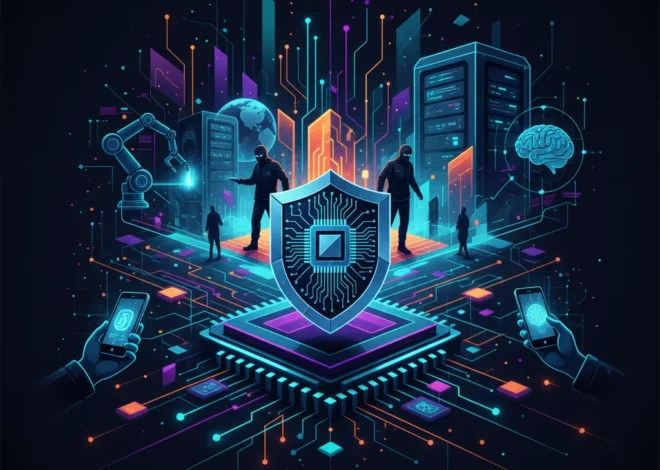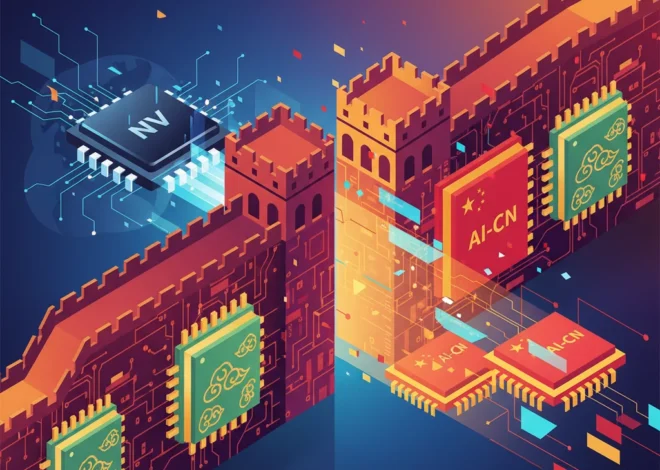
Sold Out for 2025: The AI Chip Frenzy That’s Reshaping Our Future
Imagine trying to buy tickets to the hottest concert of the decade, only to find they sold out for next year’s show before this year’s even started. That’s the situation happening right now, not with concert tickets, but with something far more fundamental to our technological future: the specialized memory chips that power the artificial intelligence revolution.
In a stunning announcement that sent ripples through the tech world, South Korean chipmaker SK Hynix, a crucial supplier for AI kingpin Nvidia, revealed that its advanced chips for 2024 are completely booked. More astonishingly, its supply for 2025 is already almost entirely sold out. This isn’t just a simple case of high demand; it’s a glaring, neon signpost pointing to the ferocious, insatiable, and accelerating appetite for AI compute power. This single piece of news tells a much bigger story about the future of innovation, the challenges facing startups, and the tectonic shifts happening under the feet of every developer, entrepreneur, and tech professional.
The Unsung Hero: What is HBM and Why Does AI Crave It?
To understand the gravity of this “sold out” sign, we first need to talk about the star of the show: High Bandwidth Memory, or HBM. For years, the bottleneck in computing wasn’t just the speed of the processor (the GPU, in the case of AI), but the speed at which data could be fed to it. Think of a world-class chef (the GPU) who can cook incredibly fast, but is stuck with a tiny pantry door (traditional memory), able to only get one ingredient at a time. The chef’s talent is wasted, waiting for data.
HBM changes the game entirely. It’s a revolutionary architecture where memory chips are stacked vertically, creating a super-wide, multi-lane highway for data to travel directly to the processor. It’s not about having more storage; it’s about having an astronomically higher bandwidth—a wider “pantry door”—allowing the GPU to process colossal datasets in parallel, which is the lifeblood of modern machine learning models.
SK Hynix is a master of this technology, particularly the HBM3 and its successor, HBM3E, which are critical components for Nvidia’s dominant H100 and upcoming Blackwell B200 GPUs. These GPUs are the engines driving everything from ChatGPT to complex scientific simulations. Without HBM, these powerful processors would be starved for data, running at a fraction of their potential. This makes SK Hynix’s production capacity a direct throttle on the entire global expansion of artificial intelligence.
The Day the Cloud Stood Still: Is Our Big Tech Habit a Ticking Time Bomb?
The Domino Effect: Who Wins and Who Waits in the AI Arms Race?
When a foundational component of the digital economy becomes this scarce, it creates a clear hierarchy of winners and losers. The news that 2025’s supply is already claimed has profound implications for every player in the tech ecosystem.
The Hyperscalers Solidify Their Reign
Who is buying up all these chips? The bulk of these orders are from the tech goliaths: Microsoft, Google, Amazon (AWS), and Meta. They are in a frantic arms race to build out their cloud infrastructure to support the explosive growth of generative AI services. For them, securing a multi-year supply of HBM-equipped GPUs is an existential necessity. It allows them to not only power their own AI products but also to sell that precious compute power to millions of other businesses through their SaaS and IaaS (Infrastructure as a Service) platforms. This scarcity ultimately concentrates power, making the barrier to entry for competing at the infrastructure level almost insurmountable.
The Squeeze on Startups and Innovators
If the giants are buying everything in sight, where does that leave the next generation of startups? For an early-stage AI company, access to high-performance computing is like oxygen. This supply crunch means they face a harsh reality: longer waiting times, skyrocketing costs for renting GPU instances, and the constant threat of being priced out of the market. This forces a strategic shift. Innovation is no longer just about building the biggest and most complex model. The new frontier is efficiency. Startups and developers are now incentivized to pioneer new techniques in:
- Model Optimization: Techniques like quantization and pruning to make models smaller and faster without sacrificing too much accuracy.
- Algorithmic Efficiency: Designing novel machine learning architectures that require less computational power.
- Creative Software Solutions: Building sophisticated software that can orchestrate and manage scarce GPU resources more effectively.
The hardware bottleneck is, paradoxically, becoming a powerful catalyst for software and algorithmic innovation.
A Gold Rush Written in Financial Reports
The financial numbers behind this story are just as dramatic as the technology. Just a year ago, the memory chip market was in a downturn. SK Hynix was posting significant losses. Today, fueled by the HBM gold rush, the company has seen a monumental turnaround. It posted its first operating profit in four quarters, blowing past analyst expectations with a Won2.89tn ($2.1bn) profit. This demonstrates a direct correlation between the demand for artificial intelligence and the financial health of the companies building its physical foundation.
To put this dramatic shift into perspective, consider the company’s recent performance:
| Quarter | Revenue (in trillions of Won) | Operating Profit/Loss (in trillions of Won) | Key Market Driver |
|---|---|---|---|
| Q1 2023 | 5.09 | -3.40 | Post-pandemic slump in consumer electronics |
| Q4 2023 | 11.31 | 0.35 | Initial surge in AI server demand |
| Q1 2024 | 12.40 | 2.89 | Explosive demand for HBM chips for AI |
This isn’t an isolated case. It’s a reflection of the entire semiconductor industry reorienting itself around the gravitational pull of AI. The immense valuations of companies like Nvidia and the massive capital investments being poured into new fabrication plants globally are all part of this same story. The demand is real, it’s historic, and it’s reshaping the global economy in real-time.
The Ripple Effects: How a Chip Shortage Impacts Everything
The consequences of this manufacturing bottleneck extend far beyond data centers and financial reports. They ripple outwards, touching nearly every corner of the tech landscape.
- Cybersecurity: The same powerful GPUs being fought over are used to train AI models for both offense and defense. A scarcity of advanced hardware could slow the development of next-generation cybersecurity tools needed to counter AI-powered threats like sophisticated phishing campaigns and automated malware creation. The arms race in cyberspace is directly tied to this hardware supply chain.
- Automation and SaaS: The next wave of business automation relies on powerful AI models hosted in the cloud. Companies developing AI-driven SaaS products may face rising infrastructure costs or capacity constraints from their cloud providers, which could stifle their growth or force them to pass costs onto customers.
- The Future of Programming: For developers, this scarcity changes the very nature of their work. Writing efficient, optimized code is no longer just good practice; it’s an economic necessity. The demand for engineers who specialize in low-level programming, parallel computing, and making AI models run efficiently on limited hardware will skyrocket.
The Day the Internet Stood Still: Deconstructing the AWS Outage and Its Domino Effect
The Future is Already Sold Out
The fact that SK Hynix has already sold the foundational components for AI systems that will be built in 2025 is a staggering testament to the speed and scale of the current technological shift. It’s a clear signal that the digital transformation we’ve been talking about for years has entered a new, supercharged phase. This isn’t a bubble of hype; it’s a tangible supply-and-demand crisis driven by a fundamental rewiring of our world with artificial intelligence.
This story is about more than just one company or one component. It’s about the physical constraints of our world struggling to keep pace with the exponential growth of our digital ambitions. For now, the future of AI is being built as fast as physically possible, and for those who want a piece of it, the line is already forming for 2026.


